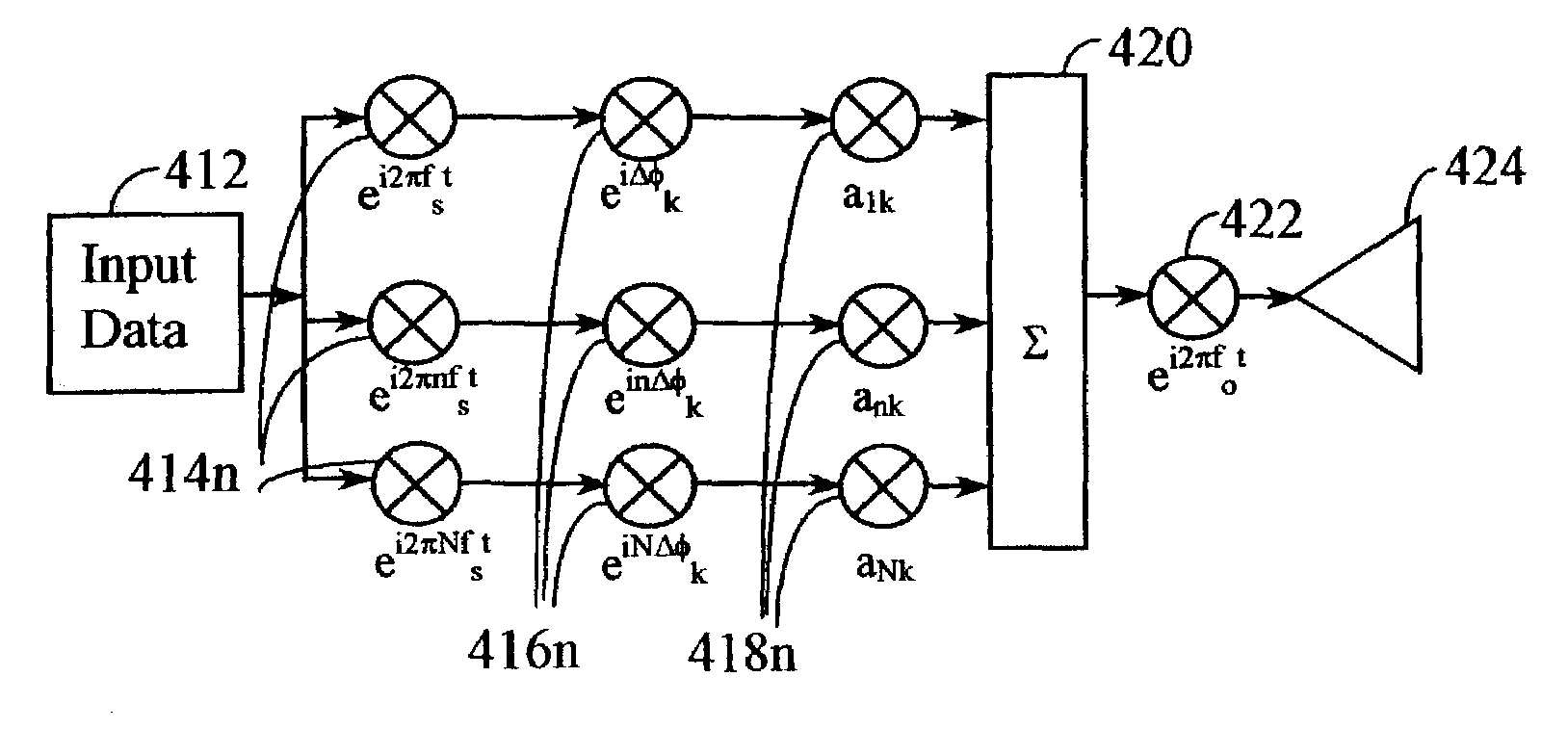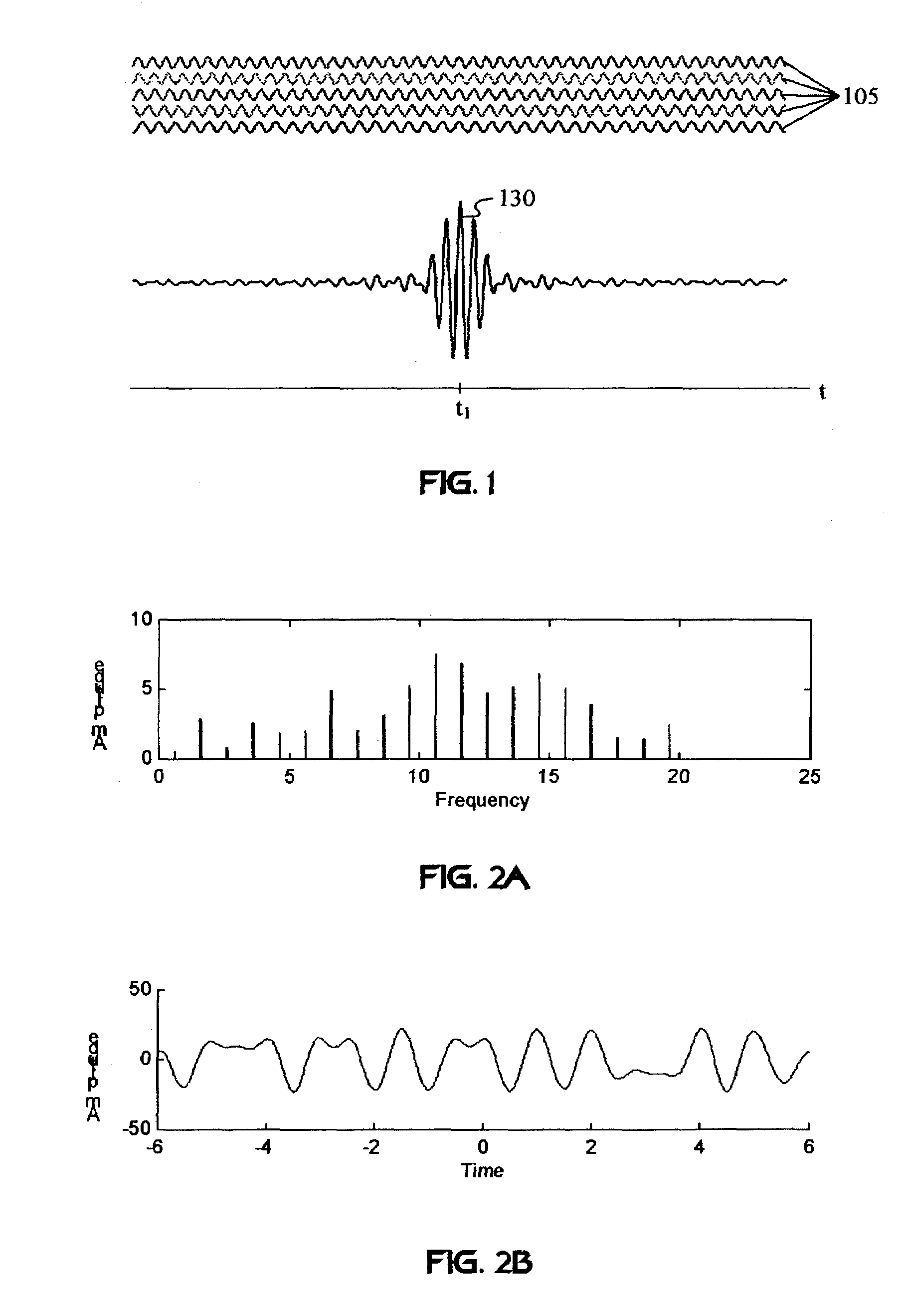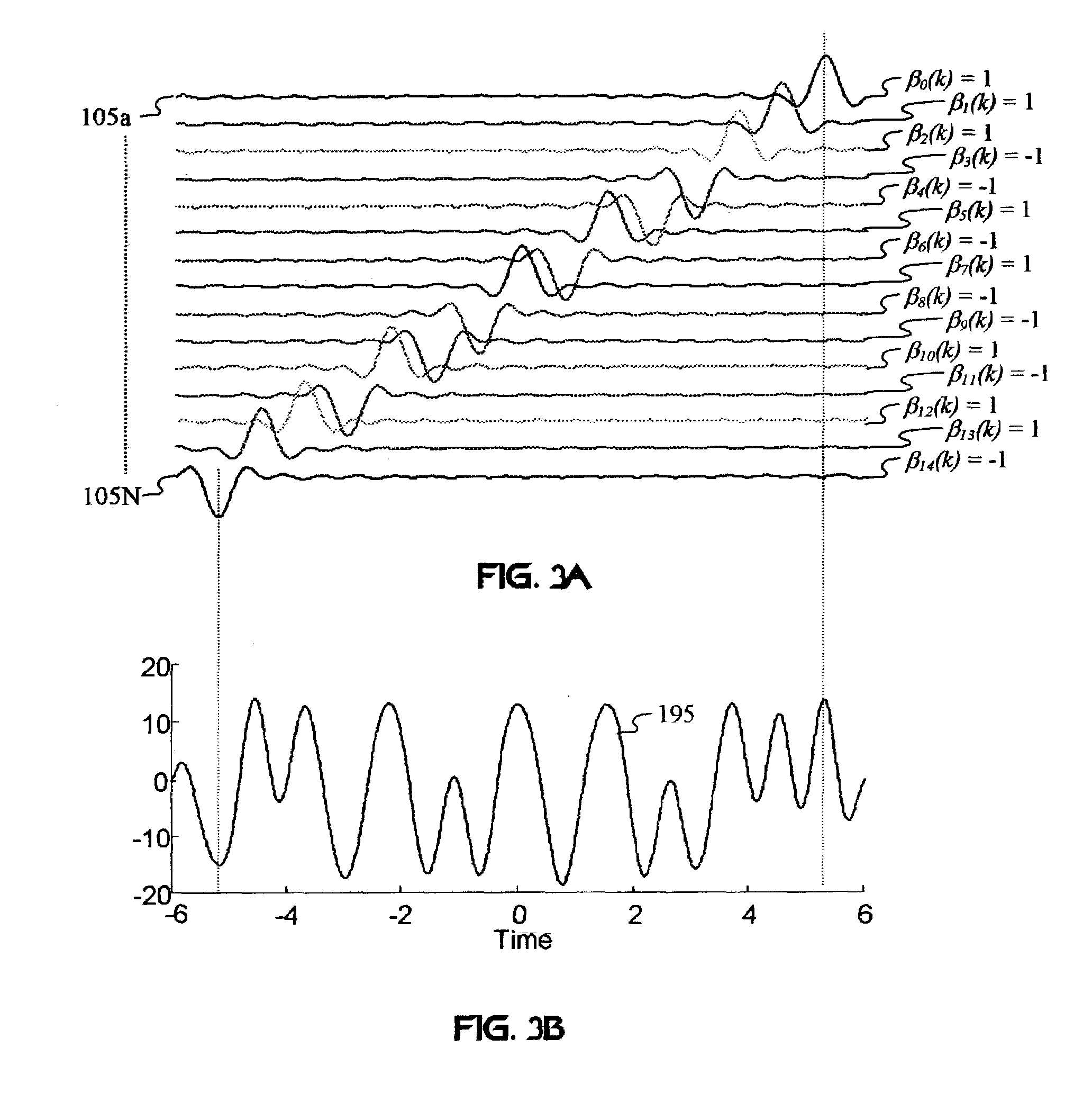Unified multi-carrier framework for multiple-access technologies
a multi-carrier, multi-carrier technology, applied in the direction of multi-path communication, digital transmission, electromagnetic transmission, etc., can solve the problems of increasing power consumption, flat fading, and no tone phase alignment, so as to reduce the effect of multi-path fading and interference, low power requirements, and reduced transmission power
- Summary
- Abstract
- Description
- Claims
- Application Information
AI Technical Summary
Benefits of technology
Problems solved by technology
Method used
Image
Examples
Embodiment Construction
[0051]Various terms used in the descriptions of CI methods, systems, and waveforms are generally described throughout the specification. The descriptions in the specification are provided for illustrative purposes only, and are not limiting. The meaning of these terms will be apparent to persons skilled in the relevant art(s) based on the entirety of the teachings provided herein and in the referenced publications.
[0052]FIG. 1 illustrates a CI pulse shape characterized by an in-phase alignment (e.g., mode locking) of harmonic sub-carriers 105 at a specific time t1. Methods for generating CI signals may employ continuous-wave systems, such as the pulse generator shown in U.S. Pat. No. 5,955,992. For example, an impulse generator produces sub-carrier harmonics corresponding to the pulse repetition rate. Alternatively, CI pulse shaping may be implemented via sub-carrier generation circuitry, such as Fourier transforms described in WIPO Pub. App. No. WO 99 / 41871: “Multiple Access Method...
PUM
 Login to View More
Login to View More Abstract
Description
Claims
Application Information
 Login to View More
Login to View More - R&D
- Intellectual Property
- Life Sciences
- Materials
- Tech Scout
- Unparalleled Data Quality
- Higher Quality Content
- 60% Fewer Hallucinations
Browse by: Latest US Patents, China's latest patents, Technical Efficacy Thesaurus, Application Domain, Technology Topic, Popular Technical Reports.
© 2025 PatSnap. All rights reserved.Legal|Privacy policy|Modern Slavery Act Transparency Statement|Sitemap|About US| Contact US: help@patsnap.com



